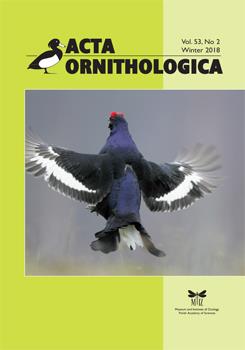Permanent changes in the surrounding environment cause long-term stress in birds, which, when lasting days or weeks, affects the activity of the immune system and increases susceptibility to diseases, leading to changes in the levels of haematological parameters. The heterophil-to-lymphocyte ratio (H:L-ratio) is generally considered an independent and robust indicator of stress level in birds. This parameter allows in a simple way to evaluate activity of the immune system and individual health state of adult and nestling birds. It also enables assessing a body response to short- and long-term stress induced by, among others, the surrounding environment, social stress, blood parasites or a greater energy expenditure of females during breeding. Under conditions of field work the determination of the H:L-ratio is not difficult because what is only needed to conduct a blood smear test is a drop of blood that can be easily obtained even from birds of a small body mass. Moreover, an increase in the H:L-ratio is observed after about an hour from the moment of catching a bird contrary to other measurements like the determination of a baseline level of corticosterone.
In this article available literature that discusses the impact of various factors on the H:L-ratio in the Great Tit as a species of ‘fast-paced’ life is reviewed. In adult and nestling birds the H:L-ratio is influenced by various factors — ecological and ecophysiological ones. In some cases the same factor, e.g. brood size manipulation or a type of habitat, can significantly influence the level of the discussed stress indicator as well as it may not show any impact at all. While interpreting the H:L-ratio one must take into account an impact of various ecological and ecophysiological factors on health state, such as habitat, phase of the annual cycle, differences between brood attempts, sex, age as well as on relations with other indicators of condition e.g. body mass or total blood haemoglobin concentration.





